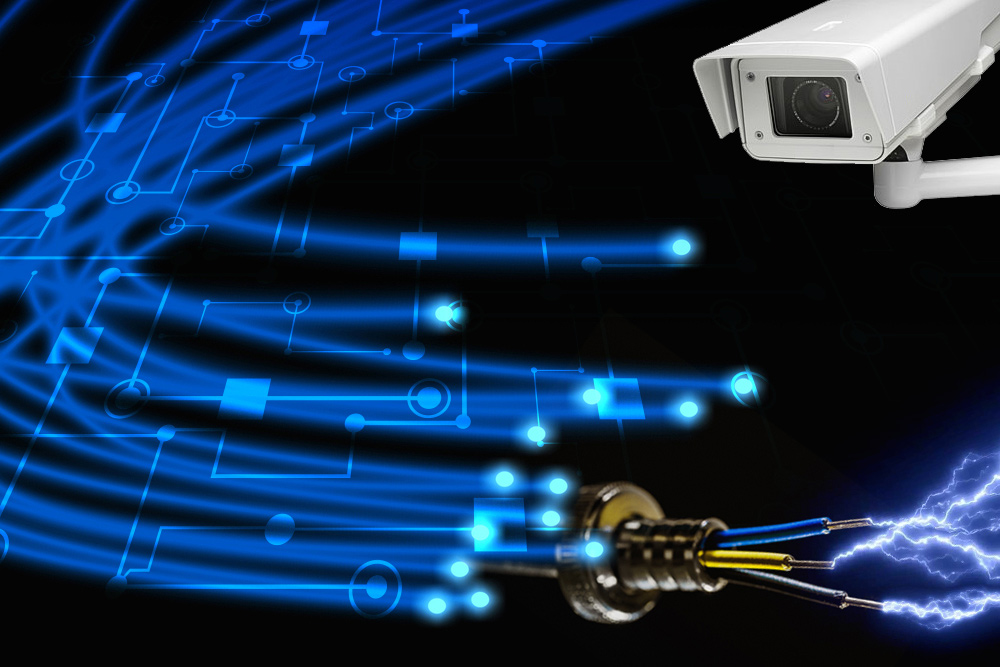A Step-by-Step Guide to Fiber Optics Infrastructure for Security Installations
Boost Your Safety And Security With Advanced Fiber Optic Safety And Security Systems
In a period where safety is critical, advanced fiber optic security systems offer an engaging option for boosting safety and security throughout various atmospheres. These systems not just boast superior data transfer and speed for high-resolution security yet also provide remarkable durability versus external interferences. As companies increasingly look for trusted methods to shield their assets, the combination of innovative innovations like AI and IoT within fiber optic structures increases essential concerns regarding their efficiency contrasted to typical systems. What implications do these innovations hold for future safety and security procedures?
Benefits of Fiber Optic Security
Taking advantage of the benefits of fiber optic modern technology substantially improves protection systems throughout various applications. One of the primary advantages is the boosted bandwidth capacity, permitting for the transmission of large quantities of data at high speeds. This is specifically crucial for real-time video clip monitoring, where high-resolution feeds can be sent out without latency, making sure immediate reaction abilities.
Furthermore, fiber optics show premium resistance to electro-magnetic interference, which is crucial in settings with possible signal interruptions. This reliability guarantees constant efficiency in important security procedures. Fiber optic cable televisions are less vulnerable to tapping and unapproved accessibility compared to standard copper wiring, therefore improving information integrity and privacy.
One more significant advantage is the toughness of fiber optic systems; they are more immune to environmental factors such as dampness, temperature level variations, and destructive substances. This durability equates to decrease upkeep costs and longer life expectancies for security installations.
Finally, the light-weight nature of fiber optic cords helps with easier setup and directing, particularly in complicated frameworks (fiber optic security system). Inevitably, the assimilation of fiber optic modern technology right into security systems not only bolsters protection steps yet additionally maximizes functional performance
Key Functions to Take Into Consideration
When evaluating fiber optic security systems, several essential attributes need to be considered to guarantee optimal performance and effectiveness. Evaluate the system's discovery variety and sensitivity; a substantial array permits for keeping an eye on large areas, while high sensitivity ensures that also minor disturbances are detected promptly.
Next, consider the integration capacities of the system. A fiber optic security system must perfectly interface with existing safety measures such as video cameras and alarm systems, creating a cohesive security network.
Resilience and ecological resistance are additionally critical attributes. Guarantee that the system is designed to endure severe climate conditions and possible physical hazards, as this will lengthen its operational life expectancy.

Finally, look right into the scalability of the system. A durable fiber optic safety and security system must be easily expanding to suit future needs without substantial overhauls. By thoroughly considering Extra resources these features, you can choose a fiber optic safety and security service that improves safety and security and safety in your atmosphere.
Installation Refine Introduction
To effectively carry out a fiber optic safety and security system, a methodical installment process is essential. This procedure begins with a thorough site evaluation to establish the particular protection demands and to recognize optimal areas for fiber optic cable televisions and protection devices. Following this evaluation, the installment team will certainly establish a detailed plan, consisting of cable television paths, needed devices, and conformity with local policies.
Next, the installation involves laying the fiber optic cords, ensuring they are protected from environmental aspects and physical damages. Appropriate handling methods are critical, as fiber optic cable televisions are delicate and can be conveniently harmed. After the cabling is mounted, adapters and discontinuations are diligently completed to ensure signal integrity.
The subsequent phase contains setting up safety gadgets such as cams, motion detectors, and alarm system systems, all incorporated with the fiber optic network. Rigorous screening is performed to confirm that all components are working appropriately and to make sure ideal performance.

Comparing Fiber Optic to Conventional Solutions
The development of protection innovation has actually led to significant innovations in the contrast in between fiber optic systems and conventional copper-based systems. Fiber optic systems utilize light to send information, providing superior bandwidth and rate contrasted to their copper counterparts. This results in boosted information transmission capabilities, making optical fiber excellent for high-resolution video clip surveillance and real-time monitoring.
Additionally, fiber optic wires are immune to electromagnetic disturbance, lowering the possibility of signal degradation brought on by exterior aspects. This characteristic makes certain constant performance, also in tough environments. On the other hand, standard copper systems are extra susceptible to interference, bring about prospective vulnerabilities in safety applications.
Durability is an additional advantage of fiber optic systems. They are less prone to harm from ecological factors such as moisture and temperature level changes, which can endanger Resources copper wiring. Fiber optics are lighter and thinner, permitting for simpler installment and minimized physical impact.
However, conventional systems have a tendency to have lower preliminary prices, making them attractive for budget-conscious projects. While fiber optic systems might require a higher ahead of time financial investment, their long-term benefits-- such as lower upkeep costs and better reliability-- usually outweigh the preliminary cost, positioning them as a superior choice for modern safety needs.
Future Fads in Safety And Security Innovation
Arising trends in safety technology are poised to transform the landscape of surveillance and danger discovery - fiber optic security system. As organizations progressively deal with innovative dangers, innovations such as fabricated intelligence (AI) and artificial intelligence (ML) are ending up being integral to safety and security systems. These innovations boost the ability of fiber optic systems by allowing real-time data analysis, determining anomalies, and automating responses to possible violations
Furthermore, the integration of the Internet of Points (IoT) is changing safety frameworks. IoT devices can provide thorough situational recognition and assist in seamless here communication in between different protection components. This interconnectedness permits a lot more reliable monitoring and faster case action times.
Biometric verification is additionally gaining energy, supplying a higher level of safety with unique physical qualities. As this modern technology develops, it is most likely to be integrated right into fiber optic systems for boosted gain access to control.
Verdict
To conclude, progressed fiber optic security systems stand for a significant innovation in safety and security innovation. Their exceptional transmission capacity, resistance to interference, and durability assist in reliable surveillance and data honesty. As these systems integrate AI and IoT abilities, they boost the overall safety structure, guaranteeing durable protection for possessions. The change from standard systems to fiber optic remedies reflects an expanding trend in the direction of much more effective and effective safety measures in a progressively intricate technological landscape.